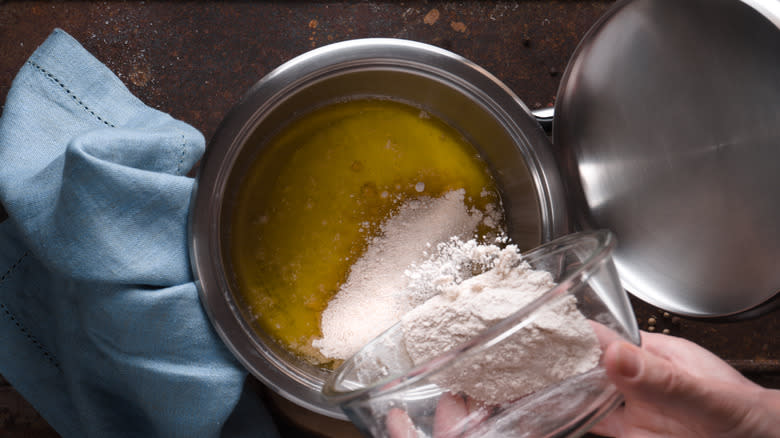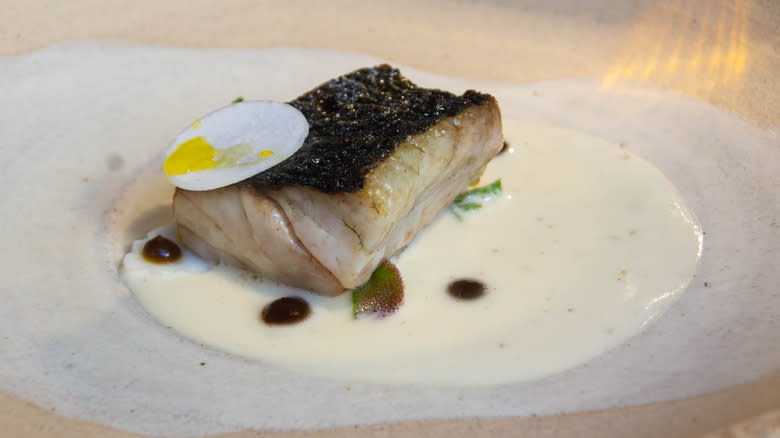What Is Allemande Sauce And What Is It Used For?

You might have heard of the concept of French mother sauces before: Five (or six, depending on the source) sauces that form the basis for all others. These always include tomato, espagnole, and béchamel, and sometimes include hollandaise and mayonnaise. But there's another sauce that's always part of the core group, and it's one that might seem a little more obscure: velouté.
Velouté can be used in all sorts of ways, but one of the best known (and most delicious) is allemande sauce, also known as sauce parisienne. Allemande, created by Auguste Escoffier, the same chef who formed the core concept of French mother sauces, is possibly more important than a lot of mother sauce derivatives, to the point where another chef, Marie-Antoine Carême, actually declared it to be itself a mother sauce. As for what it is, well ... it's basically a light, cream-based sauce, something of an enriched version of a velouté.
Read more: French Cooking Tricks You Need In Your Life
Allemande Is Just Velouté With A Couple Of Extra Ingredients

It's helpful here to first understand what a velouté sauce is. It's certainly not as common in American cuisine as, say, béchamel or tomato sauce (or even espagnole), nor as instantly recognizable as hollandaise or mayonnaise. But it's crucial to French classical cooking. At its core, velouté is one of the simplest mother sauces: It's just a stock (usually chicken, but you can also use seafood or veal stock) thickened using a blonde roux. Since a blonde roux consists entirely of butter and flour, it's literally a three-ingredient sauce.
To make an allemande, you first need a velouté. From there, add a mixture of egg yolks and heavy cream. That's really it; you're just making a creamy velouté. After that, allemande can be made into plenty of other sauces (hence why Marie-Antoine Carême considered it a mother sauce). Poulette, for instance, is just an allemande sauce to which you add mushrooms, and sometimes other additions to suit the dish.
Allemande's Strength Is Its Versatility

As far as how you'd use allemande sauce, well ... pretty much however you'd want. It's basically just a light cream sauce, and the minimalist flavors at play ensure it goes well with basically everything. You want to pair an allemande made with fish stock with seafood and an allemande made with chicken stock with chicken. But aside from that, the greatest strength of allemande sauce is its versatility. Vegetables are another great pairing; it's particularly good with Brussels sprouts.
One other thing to note: Though allemande is also called sauce parisienne, this causes some confusion. There's another dressing called sauce parisienne in America that bears no resemblance whatsoever to allemande: it's cream cheese, mayonnaise, citrus juice, and salt and pepper. It does not have a single ingredient in common. It's best not to get these confused. But as long as you know the difference between them, you can use allemande sauce however you'd like.
Read the original article on Daily Meal.


